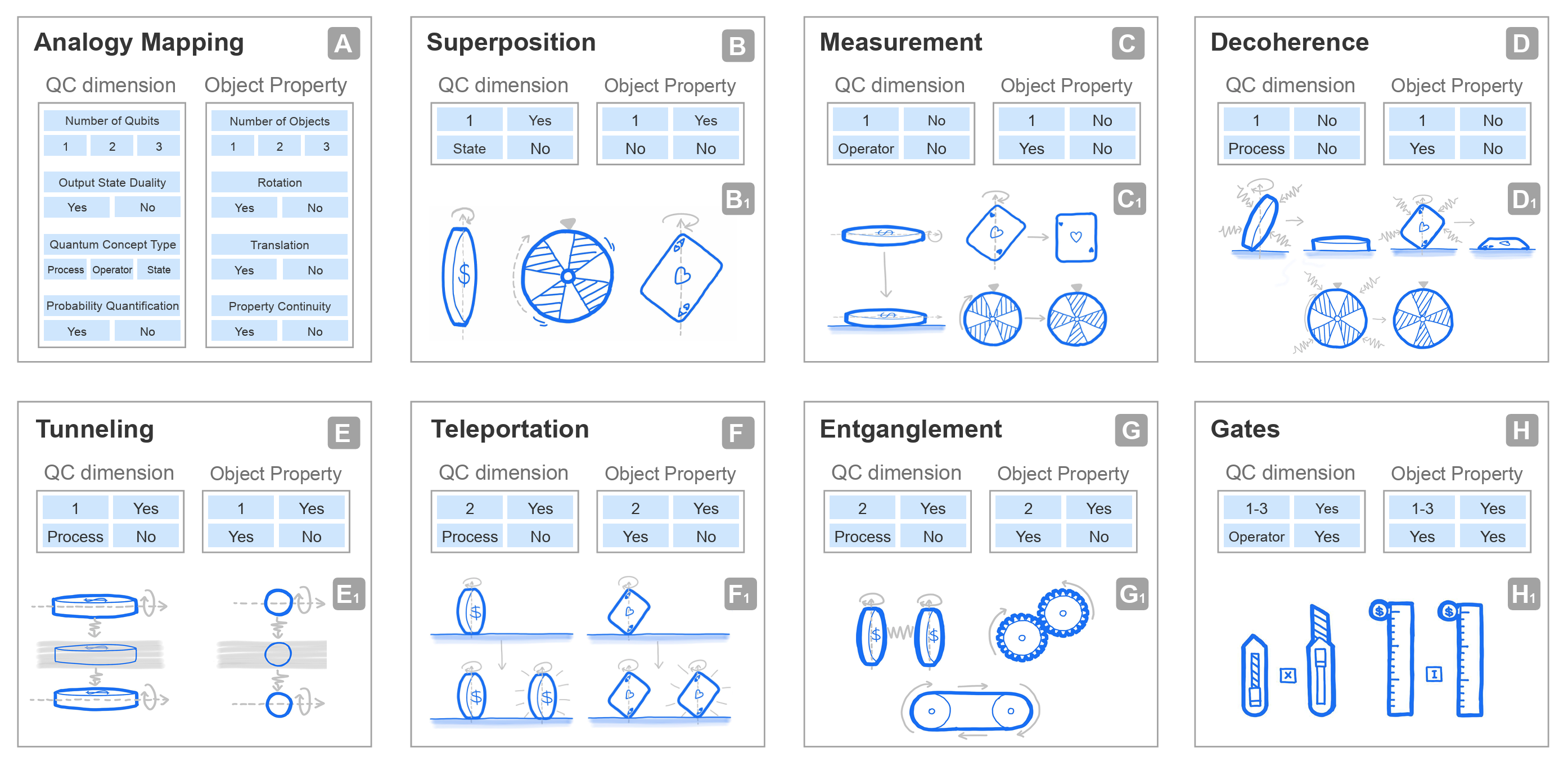Intuit:
Explain Quantum Computing Concepts via AR-based Analogy

Manusha Karunathilaka
Singapore Management University

Shaolun Ruan
Singapore Management University

Lin-Ping Yuan
The Hong Kong University of Science and Technology

Jiannan Li
Singapore Management University

Zhiding Liang
Rensselaer Polytechnic Institute

Kavinda Athapaththu
Nanyang Technological University

Qiang Guan
Kent State University

Yong Wang
Nanyang Technological University
Quantum computing has shown great potential to revolutionize traditional computing and can provide an exponential speedup for a wide range of possible applications, attracting various stakeholders. However, understanding fundamental quantum computing concepts remains a significant challenge for novices because of their abstract and counterintuitive nature. Thus, we propose an analogy-based characterization framework to construct the mental mapping between quantum computing concepts and daily objects, informed by in-depth expert interviews and a literature review, covering key quantum concepts and characteristics like number of qubits, output state duality, quantum concept type, and probability quantification. Then, we developed an AR-based prototype system, Intuit, using situated analytics to explain quantum concepts through daily objects and phenomena (e.g., rotating coins, paper cutters). We thoroughly evaluated our approach through in-depth user and expert interviews. The Results demonstrate the effectiveness and usability of Intuit in helping learners understand abstract concepts in an intuitive and engaging manner.
Video Demo
Framework
Here is an overview of our analogy-based characterization framework. (A) shows the analogy-based mapping between the characterization dimensions of quantum computing(QC) concepts (i.e., number of qubits,output state duality, quantum concept type, and probability quantification) and the corresponding properties of daily objects (i.e., number of daily objects, rotation, translation, and property continuity). (B)- (H) showcase the detailed explanation of each quantum computing concept using our analogy-based characterization framework, with several analogy examples provided for each concept. The QC dimensions and object properties shown vertically in (A) correspond to those listed in reading order (left-to-right) in (B)- (H).

Citation
@inproceedings{karunathilaka2025intuit,
author = {Karunathilaka, Manusha and Ruan, Shaolun and Yuan, Lin-Ping and Li, Jiannan and Liang, Zhiding and Athapaththu, Kavinda and Guan, Qiang and Wang, Yong},
title = {Intuit: Explain Quantum Computing Concepts via AR-based Analogy},
year = {2025},
isbn = {9798400713958},
publisher = {Association for Computing Machinery},
address = {New York, NY, USA},
url = {https://doi.org/10.1145/3706599.3720085},
doi = {10.1145/3706599.3720085},
booktitle = {Proceedings of the Extended Abstracts of the CHI Conference on Human Factors in Computing Systems},
articleno = {354},
numpages = {8},
series = {CHI EA '25}
}